If you’ve ever dreamed of harvesting your own juicy, sweet, and slightly tangy kiwis right from your backyard, you’ll be delighted to know that growing kiwi vines at home is entirely possible — and surprisingly rewarding. While most people think of kiwis as tropical fruit, many hardy and semi-hardy varieties thrive in a range of U.S. climates.
This guide will walk you through everything you need to know, from choosing the right variety to planting, caring, pruning, and harvesting kiwi vines. By the end, you’ll be well-equipped to cultivate your own productive and beautiful kiwi vines at home.
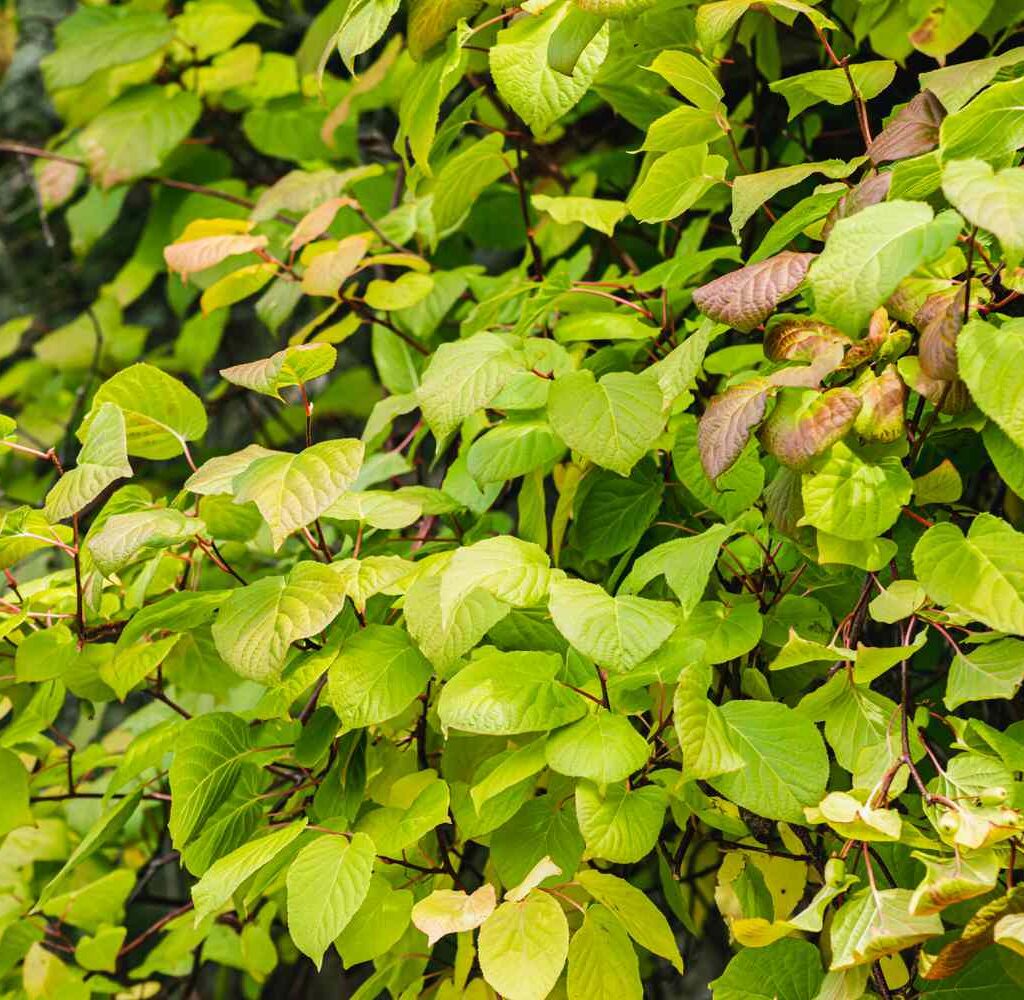
Why Grow Kiwi Vines?
Kiwi vines aren’t just about the fruit — they’re fast-growing, ornamental climbers that can add lush, green beauty to your garden while offering nutrient-packed fruit loaded with vitamin C, antioxidants, and fiber. A single mature vine can produce up to 100 pounds of fruit in a season, making it a worthwhile addition for home gardeners.
Bonus: Kiwi vines also make a stunning natural shade covering for pergolas, fences, and trellises.
Types of Kiwi Vines
There are several types of kiwis suitable for home gardening, each with unique characteristics:
1. Hardy Kiwi (Actinidia arguta)
- Tolerates colder climates (USDA Zones 4–9)
- Smaller, smooth-skinned fruits (can be eaten whole)
- Vigorous and productive
- Popular varieties: ‘Anna’, ‘Geneva’, ‘Issai’ (self-fertile)
2. Super Hardy Kiwi (Actinidia kolomikta)
- Withstands extreme cold (Zones 3–8)
- Produces tiny, grape-sized fruits
- Attractive foliage with pink, white, and green variegation
- Typically requires male and female plants
3. Fuzzy Kiwi (Actinidia deliciosa)
- Traditional supermarket kiwi
- Larger, fuzzy-skinned fruits
- Thrives in warmer regions (Zones 7–9)
- Popular varieties: ‘Hayward’ (needs both male and female plants)
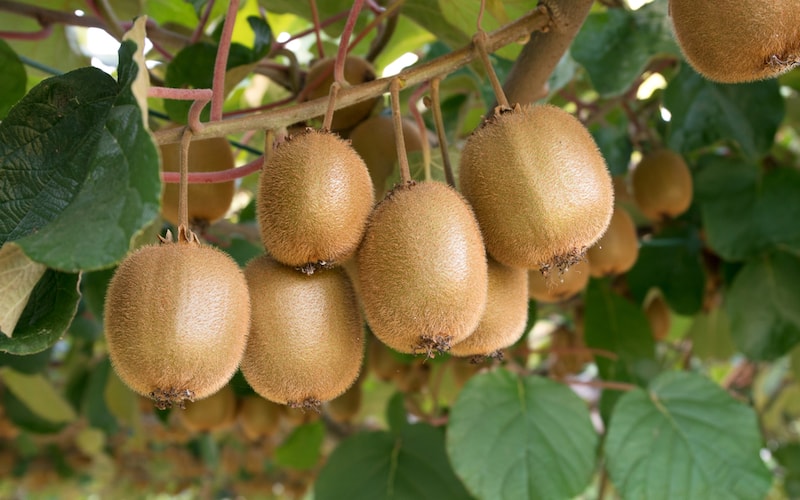
Choosing the Right Variety for Your Region
Before planting, select a kiwi variety compatible with your climate and available garden space:
- Northern states (cold winters): Hardy or super hardy kiwi
- Southern states (mild winters): Fuzzy kiwi
- Limited space: ‘Issai’ (self-fertile, compact)
Pro Tip: Most kiwi vines are dioecious — meaning they have separate male and female plants. You’ll need at least one male for every 6–8 female vines for successful pollination, unless you plant a self-fertile variety like ‘Issai’.
Where and When to Plant Kiwi Vines
Best Planting Time:
- Early spring (after the last frost) or fall (in mild climates)
Ideal Site Conditions:
- Full sun (at least 6–8 hours daily)
- Sheltered spot protected from strong winds and late frosts
- Well-drained, loamy soil rich in organic matter
- pH between 5.5–7.0
Kiwis need space to climb and spread — plan for a sturdy trellis, arbor, or fence.
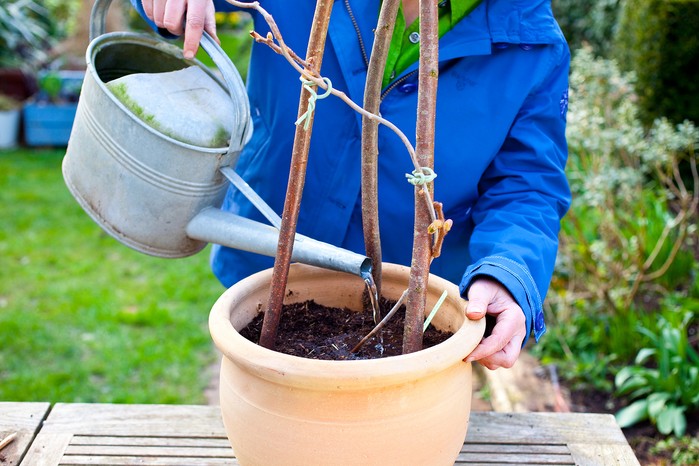
How to Plant Kiwi Vines
Planting Instructions:
- Prepare the site:
Loosen the soil to a depth of 12–18 inches, mixing in compost or aged manure. - Dig a hole:
Twice as wide and as deep as the root ball. - Position the vine:
Plant at the same depth as it grew in the nursery container. - Backfill:
With soil and compost mix, firming gently. - Water thoroughly after planting.
- Mulch:
Apply a 2–3 inch layer of mulch to retain moisture and suppress weeds, keeping it away from the base of the stem.
Spacing:
- Hardy/super hardy kiwis: 10–15 feet apart
- Fuzzy kiwis: 15–20 feet apart
- Self-fertile types: 8–10 feet apart
Building a Support System
Kiwi vines grow vigorously and need strong support structures like:
- Trellises
- Arbors
- Pergolas
- Wires stretched between sturdy posts
Construct supports before planting to avoid damaging roots later.
Training Tip:
Tie young vines loosely to the structure and encourage one main leader stem upward, removing side shoots until it reaches the top.
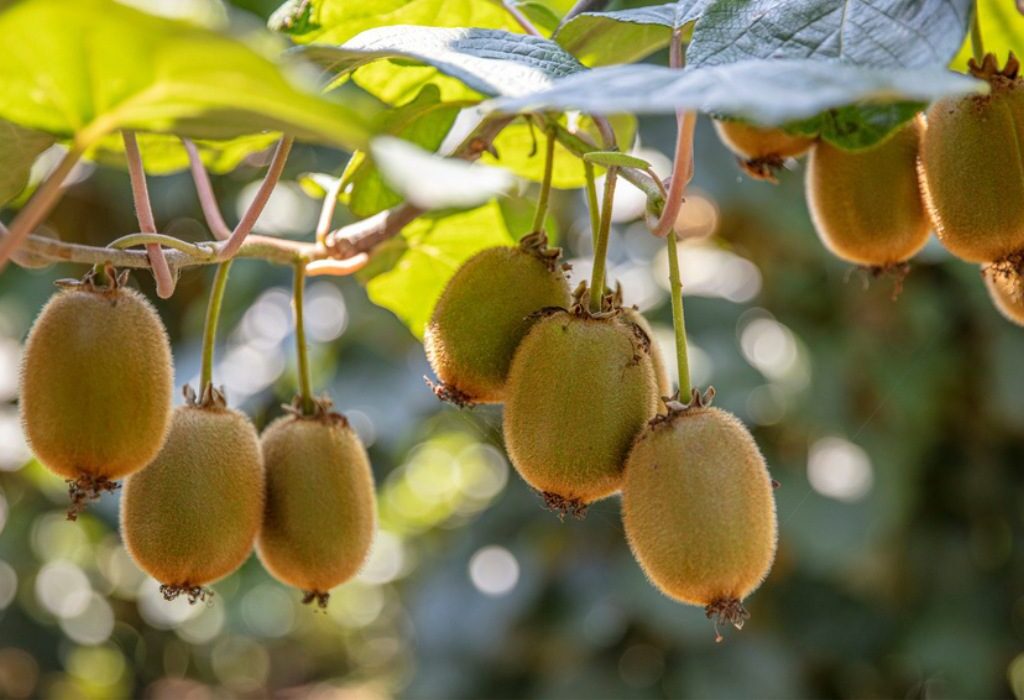
Watering and Feeding Kiwi Vines
Watering:
- Keep soil consistently moist, especially during the first two years.
- Mature vines require 1–2 inches of water per week, more during hot, dry spells.
- Avoid waterlogged soil, which can lead to root rot.
Fertilizing:
- In early spring, apply a balanced fertilizer (like 10-10-10) or compost.
- Side-dress with compost or organic mulch in summer.
- Avoid over-fertilizing with nitrogen, which promotes leaf growth over fruit production.
Pruning Kiwi Vines
Regular pruning is crucial for healthy, productive kiwi vines.
When to Prune:
- Winter (dormant season): Remove dead, damaged, or overcrowded branches.
- Summer: Thin out excess new growth and train remaining shoots.
Pruning Tips:
- Maintain one strong central leader.
- Remove any weak side shoots.
- Keep fruiting canes (last year’s growth) well-spaced for good air circulation.
- Trim back vines to 6–8 leaves beyond the last fruit cluster during the growing season.
Proper pruning increases fruit quality and prevents tangled, overgrown vines.
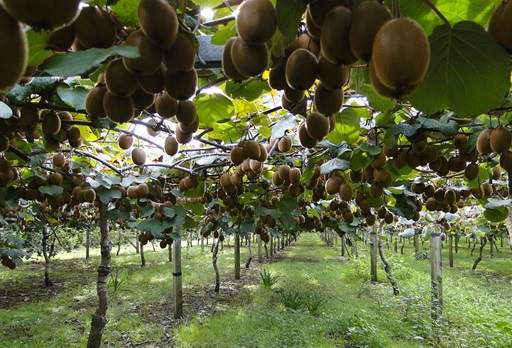
Common Pests and Problems
Kiwi vines are generally hardy, but watch for:
- Aphids: Control with insecticidal soap or water sprays.
- Spider mites: Treat with neem oil or horticultural oil.
- Root rot: Avoid waterlogged soil and improve drainage.
- Late frost damage: Protect young shoots in early spring with row covers.
Good airflow and pruning help prevent fungal diseases like powdery mildew.
When and How to Harvest Kiwi Fruit
Hardy & Super Hardy Kiwis:
- Harvest late summer to early fall when fruits soften slightly and taste sweet.
- Can be picked firm and ripened indoors at room temperature.
Fuzzy Kiwis:
- Harvest in fall (before the first frost) when seeds turn black and fruit softens.
- Store firm fruit in a cool, dark place for ripening over several weeks.
Pro Tip: Ripe kiwis yield slightly to gentle pressure and detach easily from the vine.
Propagating Kiwi Vines
Eager to grow more kiwis? They can be propagated from:
Softwood Cuttings (Early Summer):
- Take 6–8 inch cuttings from new, green growth.
- Remove lower leaves and dip the cut end in rooting hormone.
- Plant in moist potting mix under partial shade.
Hardwood Cuttings (Winter):
- Cut 8–12 inch sections of dormant, one-year-old wood.
- Plant directly in prepared beds or pots until new growth appears.
Final Thoughts
Growing kiwi vines at home is a rewarding gardening project that offers both tropical-style beauty and a bounty of sweet, nutritious fruit. With the right variety selection, a sunny site, sturdy supports, and consistent care, you can enjoy lush greenery and homegrown kiwis for years to come.
So whether you have a sprawling backyard, a sunny fence line, or a cozy pergola, why not give kiwi vines a try this season? Not only will your garden look stunning, but you’ll have baskets of fresh, vitamin-rich kiwis to share with family and friends.

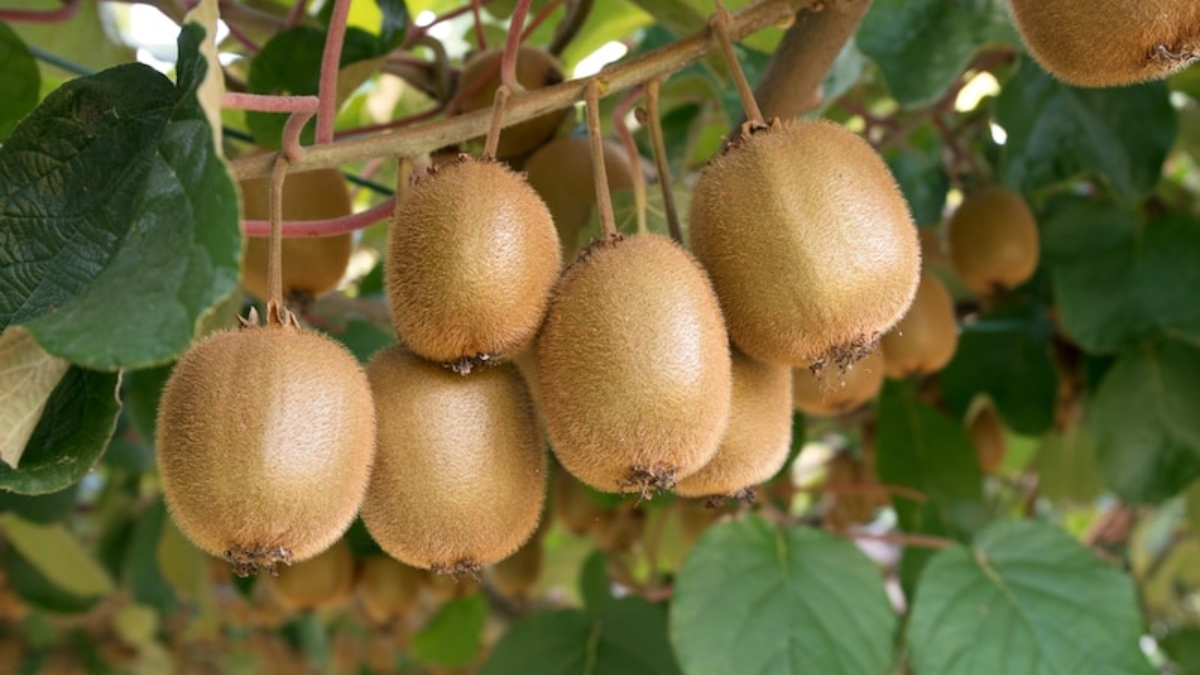




Leave A Comment